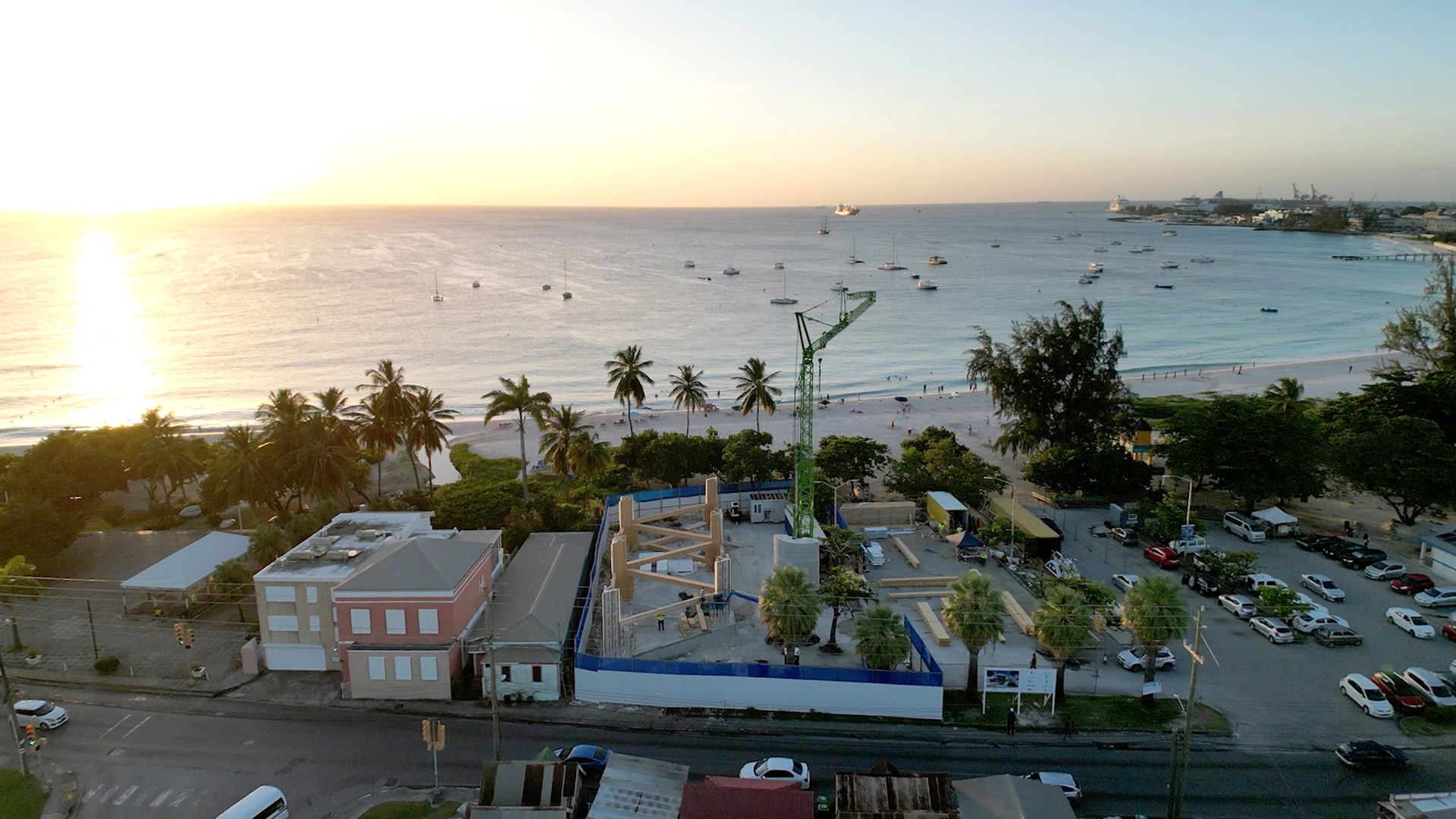Woho Prototype – Modular construction for school in Barbados, Madrid, Spain

The technology company WoHo (World Home) has set itself the goal of integrating architecture, technology and construction into an optimized platform to quickly design and construct high-quality buildings. WoHo's modular design is intended to be affordable and environmentally friendly but is flexibly adaptable for different applications and locations. Transsolar has been a partner of WoHo since its conception.
WoHo Systems second project is the “Oceana Lab”, a place for education and research in the Caribbean island state of Barbados in collaboration with Michael Murphy Architects.
The design for the school began in March 2024, followed by the building of a prototyping and prefabrication of the modules in July (in Spain). On-site construction began at the end of October and within three months the building, including all the equipment, had been transported and assembled, which took a mere 3 weeks.
Each module has two stories on a triangular footprint (38,7 ft /edge) and a three-sided pyramid roof, and the building is formed by 4 of these modules assembled together.
The top floor is designed to be conditioned passively without any mechanical or active systems, using only natural ventilation via operable façade and skylight elements. Ceiling fans will also be part of the climate concept in accordance with ASHRAE Standard 55-2023 to ensure comfortable indoor temperatures are maintained throughout the year.
The design also considers the projected changing climate due to the effects of global warming, and these spaces will be able to maintain a fully passive design even with increasing temperatures in the coming years. This could be reinforced by the introduction of thermal mass, with a PCM mat layer for instance, in order to maximize the cooling effect of the temperature drop occurring during nighttime.
The façade shading system is a key element of the design in both the top and ground floors, in order to control the solar heat gains while avoiding glare near the façade. During daytime, the slats that have a clear, reflective color should be arranged horizontally for the best daylight distribution in the room and be able to block all direct sunlight.
For the roof, Transsolar recommends a very reflective outer surface and 3,9" (10cm) of insulation (U-value 0.25 W/m²K) to deal with the large solar radiation levels of this tropical climate. The outer walls, also made of cross-laminated timber (“CLT”), will be provided with a thin 1,6" (4cm) insulation layer (u-value 0.5 W/m²K).





